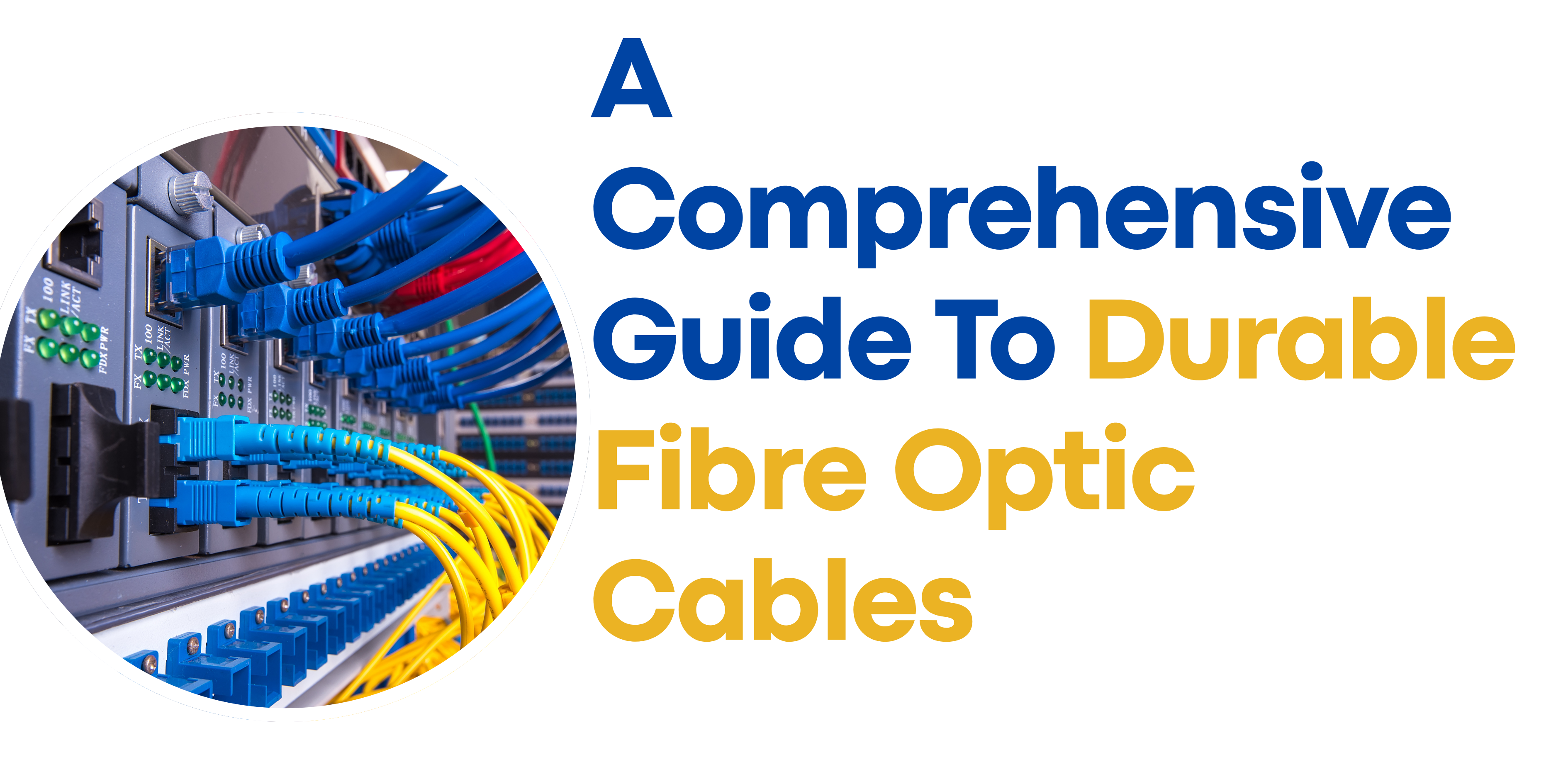Reliable communication is essential in today's interconnected society. Fibre optic cables play a vital role in transmitting data quickly and efficiently. Understanding their durability is crucial for those looking to invest in long-lasting infrastructure. This guide explores the features, benefits, and considerations when selecting durable fibre optic cables.
Understanding Fibre Optic Cables
Fibre optic cables are built to transmit data through light signals. They are made of thin strands of glass or plastic and provide high-speed data transfer over a long distance. Cladding outside the core prevents light from escaping and reflecting it to minimize signal loss.
Benefits of Durability
Ability and the other characteristics that will make the fibre optic cable work for a longer time. We need a durable cable that can survive the elements and physical abuse. It lasts longer, making maintenance expenses low and downtimes closer to insignificant, making this a smart choice for individuals and businesses.
Factors Affecting Durability
Several elements contribute to the durability of fibre optic cables. Material quality, construction techniques, and environmental conditions all play significant roles. Opting for high-quality materials ensures resistance to wear and tear. Proper construction techniques enhance strength, while considering environmental factors can prevent damage from moisture and temperature fluctuations.
Material Considerations
The materials used make a difference. They must be strong and have the ability to carry the data with less loss due to the glass fibres. Plastic fibres are more pliable, but perhaps offer a lesser durability compared to metal. Protective coatings also protect the cable from the outside elements, extending the effective lifespan.
Construction Techniques
The design of a fibre optic cable affects how much it can withstand. Tight-buffered cable is mainly for indoor usage and protects from small bends and hits. Loose-tube designs, frequently employed for outdoor applications, facilitate expansion and contraction, which reduces breakage in diverse temperature conditions.
Environmental Adaptability
Durable fibre optic cables must adapt to different environments. For outdoor applications, they should resist moisture, UV rays, and extreme temperatures. Indoor cables, on the other hand, must handle potential mechanical stress and be easy to install. Understanding the specific environment helps you choose the appropriate cable type.
Installation and Maintenance
A properly installed cable is a durable cable. This prevents fibres from being stressed unnecessarily and is made possible through proper handling and the use of recommended bend radii. This is also where regular maintenance checks are required. Regular inspections can detect problems early on to allow repairs to be made before other, more expensive problems arise and disrupt production.
Evaluating Cable Quality
Evaluating the quality of fibre optic cables is vital. When it comes to the quality of fibre optic cables, you will need to consider various aspects. Search for certificates that indicate adherence to industrial standards. By testing for signal loss and the strength of materials they used in the cable, the overall quality and longevity of the cable can be determined. Find high-quality cables at Ausoptic.
Choosing the Right Supplier
If there is one thing that eventually helps in making a fibre optic installation successful, it is a reliable supplier. A trusted provider will only sell cables that are up to standard and, more importantly, will provide warranties. Other elements that should also be kept in mind include customer service and technical support to ensure the latter is there when needed.
Cost and Value
Though rugged fibre optic cables can demand a premium upfront price, they frequently prove more cost-effective in the long run. Lower maintenance costs and greater reliability translate into long-term savings. Evaluating the total cost of ownership helps make wise decisions.
Future-Proofing Your Investment
For instance, durable fibre optic cables will orient the infrastructure for the future. Reliability provides you with ease of compatibility with novel developments amidst increasing data demands. Watching for emerging trends can help inform upgrade and replacement decisions.
Conclusion
Sturdy fiber optic cables form a part of the foundation for modern communication networks. Their resilience against numerous challenges guarantees reliable and consistent performance. Buckling to durability and proper selection of materials and construction techniques leads to good decision-making for today and tomorrow. Good quality cables are a good investment for your room, allowing you to improve communication and secure a flexible infrastructure to meet your changing needs.

















Post Comments